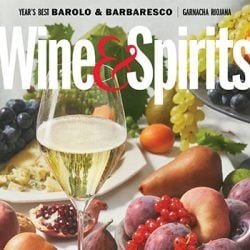It is a windy day in early spring and the sky darkens without warning in the town of Bédarieux in the Hérault department of the Languedoc. Here, on Saturday, April 4, the Chai Christine Cannac hosted the eighth annual “Salon des vins nature.” Christine Cannac, formerly a sommelier at some of France’s finest Michelin-starred restaurants, has returned to live in her hometown, where she runs her own wine bar and a shop specializing in natural wines from the region. Cannac believes the Languedoc has unrealized potential to make great wines that express its unique and varied terroir.
Barral is the local inspiration to many younger producers, having established himself as what he calls a “polyculturalist,” rather than adhering to biodynamics, which has, in many circles, become thought of as synonymous with natural wine. Though the farming practice may be influential in northern France, in regions such as the Loire and Burgundy, Barral believes biodynamic methods are not applicable in the Languedoc. “Biodynamics is adapted for places with high humidity, where there is not enough sun,” he explains. “Here the problem we have is drought.”
His strategies include replanting the hedgerows, which his father had removed to make room for tractors, but which create a windbreak that prevents erosion, and provide a habitat for birds and beneficial insects. He protects hollow trees—homes for bats, the natural predators of vineyard pests such as grapeworms—and he raises livestock to provide manure without chemical residues; his goal is to encourage earthworms to breed. He also plants olives and wheat. “For me the most important thing is balance, and for that you need diversity. It is the most important thing.”
Emmanuel Pageot, a producer based in Gabian, believes that the biodynamic practice of spraying “Preparation 500,” a homeopathic dose of cow dung fermented in cow horns, contributes to lower pH levels in his wines. Pageot has produced an orange wine from marsanne since 2008 and also produces a complicated sauvignon blanc, which he makes in several parts and then blends. He picks one parcel early to give higher acidity, which he ferments in stainless steel; another ferments in barrel; he ferments one parcel half on the skins, like a red wine, to give texture, and then finishes it in barrel; another ferments with extended skin contact.
The challenge of working in a rugged and arid region like the Languedoc seems to attract individualists, each with their own solutions to making natural wine. In fact, none of them speak of a natural wine movement, and Cannac bristles at the suggestion that her group might be part of a greater trend toward natural wine. “For me [natural wine] is an ensemble,” she explains. “It is about working in harmony with nature, watching, doing things at the right moment and not using synthetic materials.” Here, Cannac’s vivid blue eyes blaze with impatience and determination. “I have been passionate about natural wine for 15 years,” she says. “I am not part of any trend. The trend is a Paris thing.”
This story was featured in W&S June 2015.
photo by Thomas Gendre
This story appears in the print issue of June 2015.
Like what you read? Subscribe today.
















